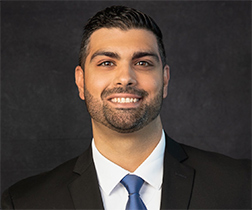What is Snapping Scapula?
Snapping scapula or snapping scapula syndrome is also known as scapulothoracic syndrome or scapulocostal syndrome. It is a condition characterized by painful clicking, snapping, or grinding of the shoulder blade. The sound occurs as a result of rubbing of soft tissues between the thoracic wall and the scapula. The soft tissues stuck in between these two structures may be a muscle, tendon, or bursa. Snapping scapula is most commonly found in young and active individuals who are involved in repetitive overhead activities.
Anatomy of the Shoulder
The shoulder joint is a ball and socket joint made up of three bones, namely the humerus, scapula, and clavicle. The end of the humerus or upper arm bone forms the ball of the shoulder joint. An irregular shallow cavity in the scapula called the glenoid cavity forms the socket for the head of the humerus to fit in. The two bones together form the glenohumeral joint, which is the main joint of the shoulder. The scapula is a flat triangular-shaped bone that forms the shoulder blade. It serves as the site of attachment for most of the muscles that provide movement and stability to the joint. A tiny, fluid-filled sac called bursa is located within each shoulder that prevents friction between the bones and aids in smooth movement of the shoulder joints.
Causes of Snapping Scapula
Some of the causes of snapping scapula include:
- Bursitis
- Scapular or rib fractures
- Bone spurs
- Shoulder instability
- Atrophy, wasting, or weakness of the scapular stabilizing muscles
- Osteochondroma
Symptoms of Snapping Scapula
Some of the common symptoms of snapping scapula include:
- Crunching or popping sensation
- Stiffness or tenderness
- Persistent pain
- Swelling around the shoulder
- Limited range of motion
- Winging or noticeable bump of the scapula
- A forward-tilted or drooped posture on the affected shoulder
- Fatigue with overhead repetitive movements
Diagnosis of Snapping Scapula
Your doctor will review your symptoms and medical history and perform a physical examination to check for range of motion, stability, flexibility, and strength of your shoulder. If necessary to confirm the diagnosis, your doctor may order certain electrodiagnostic tests such as X-rays, MRI, CT scan, or ultrasound to have a detailed look at the scapular angles, rib or skeletal deformities, and bony or soft tissue abnormalities.
Treatment for Snapping Scapula
Treatments for snapping scapula include both non-surgical as well as surgical options. Your doctor will decide the best option for you based on the condition of your shoulder.
The nonsurgical treatment options may include:
- Ice: Application of ice packs on the shoulder to decrease swelling and pain
- Activity Modification: Avoiding activities that trigger symptoms and changing your lifestyle
- Physical Therapy: Regular exercise regimen to improve stability and range of motion as well as strengthening and coordination of the scapular muscles
- Anti-inflammatory Medication: Meds like naproxen and ibuprofen can relieve inflammation and pain.
- Cortisone Injection: If physical therapy, medications, rest, and activity modification do not yield the desired results, then a cortisone injection may be used for therapeutic and diagnostic purposes. Cortisone is a very effective anti-inflammatory medicine for bursitis and long-term pain reliever for tears and structural damage.
The surgical treatment options may include:
- Arthroscopy: Your doctor will be able to repair damage to soft tissues, such as ligaments, labrum, rotator cuff tears, or bursitis by using this technique. Arthroscopy is a minimally invasive surgical procedure that involves making small keyhole incisions to pass a fiberoptic tube with a tiny camera called an arthroscope and miniature instruments into the shoulder joint. The camera displays pictures of the affected soft tissue, inflamed bursa, or bony abnormalities on a television screen and the doctor uses these images to carry out the necessary repair such as removal of the inflamed bursa, fibrous tendons, or bone spurs accordingly.
- Open Surgery: Any bone removal is better approached with an open surgery. This approach provides your surgeon with a better opportunity to visualize several structures affected and establish what is going on. A traditional open surgery approach would require a large surgical incision to be made to repair the affected region if the injury or abnormality is large and complex. During an open surgery bone resection, your surgeon may remove a section of the scapula that is protruding and causing friction against the rib cage. This procedure is known as scapular dissection.
These surgical approaches are followed by immobilization in a sling for many weeks. This provides ample time for the soft tissues to heal, particularly when the muscles have been excised from the bone as part of the surgery. Immobilization is followed by rehabilitation and exercise regimen to restore strength, motion, and function.
Doctors Performing Snapping Scapula Care
-
Howard W. Harris, M.D.Shoulder
-
Michael L. Nguyen, M.D.Shoulder &
Sports Medicine -
Paul A. Tavakolian, M.D.Hand, Wrist & Elbow















